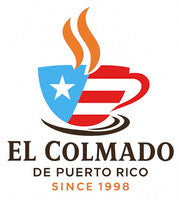History of Coffee in Puerto Rico
In 1765 the King of Spain commissioned Don Alejandro O'Reilly to visit the colony and report his observations. "In his report to the Crown, O'Reilly recommended that skilled artisans and farmers be sent to the Island; a government-owned sugar mill be installed; uncultivated lands belonging to neglected grants be confiscated by the Crown and divided among the new farmers. .
. . . . One of the chief obstacles to the development of agriculture at that time was the lack of laborers, as the only people allowed to settle in Puerto Rico were Spaniards. In 1778, however, agriculture was greatly stimulated as the result of a Royal Decree issued by the King of Spain, allowing foreign Catholic laborers to emigrate to the Island, with the promise of lands being given to them.
In 1815 another Royal Decree ( 'Cedula de Gracia') was issued inviting foreigners to emigrate to Puerto Rico and be given land. For the first time in their colonial history the Islanders were allowed to trade with other nations.
During the early 1800's there was a migration to Puerto Rico of residents from the French Mediterranean island of Corsica. The Corsicans ended up settling around a town called Yauco. By the 1860s they dominated the coffee industry on the island. Puerto Rican coffee, (particularly from the Yauco region), sold at a premium price all over Europe.
Two devastating hurricanes hit Puerto Rico in 1898. The hurricanes destroyed the coffee industry. The United States became interested in Puerto Rico's sugar production (not heavy coffee drinkers at that time) they were buying the bulk of their coffee from Brazil. European nations no longer allowed Puerto Rican coffee to come in as a colonial product. Market opportunities for Puerto Rican coffee were quickly drying up and sugar became the biggest crop.
The era of 'one crop' sugar plantations ( the plantation owners were rich and everyone else was poor) in Puerto Rico lasted until the late 1930's when the Federal Department of Agriculture ended the sugar subsidy. United Fruit established sugar plantations in Central America, Puerto Rico could not compete and most of the sugar plantations in Puerto Rico became bankrupt. Puerto Rico was guided into an industrialized economy and agriculture has never regained an economic majority in Puerto Rico again. If all the arable land on the Island were planted with food crops for domestic consumption rather than cash crops for export, it could not even begin to support the total population. Today 90% of the food consumed in Puerto Rico is imported.
Yauco Selecto's ( a premium brand of coffee today) present owners trace their origin back to the early migration of the Corsicans to Yauco. Growing coffee in Puerto Rico is now a high cost operation, as Puerto Rico's labor cost reflect U.S. Government standards. "Yauco Selecto is proud to offer the top living conditions available in the coffee industry." - Excerpted from the Yauco Selecto literature.
The young people of today have no knowledge, no memories of living conditions 60-70 years ago. Today, Puerto Rico is no longer a third world country and presently enjoys most of the benefits of the modern world, including an economic recession and high taxes. Today's cement houses stand up to hurricane force winds. There are no houses like the one below in the mountains of today.
